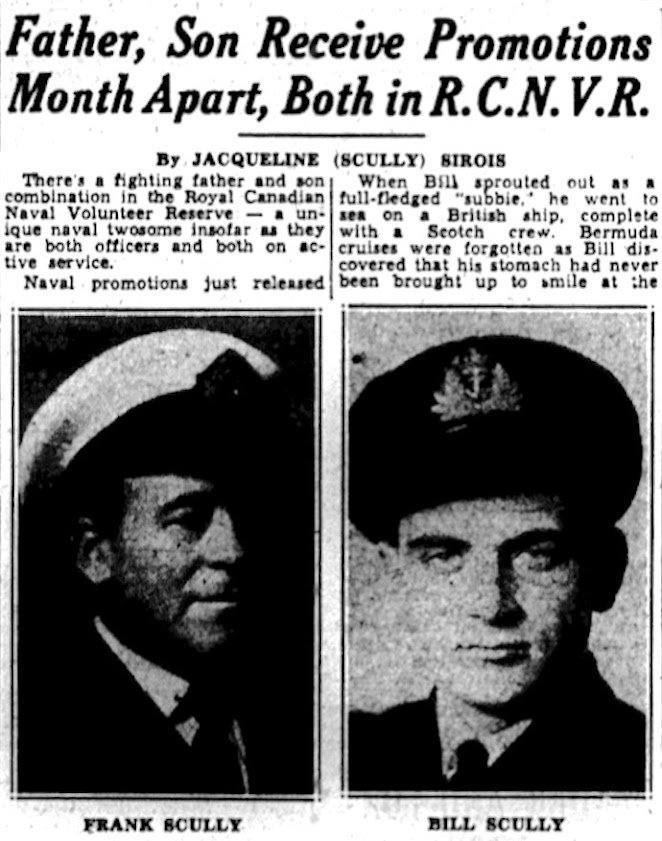Allied Progress in the Mediterranean as Printed 80 Yrs Ago (from 2023)
And the Hunt for a Montreal War Correspondent is Renewed!
Italy is hitched to a ruthless war wagon and Sicily will pay
Introduction:
In 2023 we will be reminded in more than a few ways that a significant anniversary is at hand. Sicily was invaded by Allied forces beginning in July 10, 1943, and mainland Italy was invaded about two months later beginning on September 3, exactly 80 years earlier than those same dates this year. Will there be ceremonies, services, memories and memoirs shared, reminders of the brutality of war and its inevitable and long-lasting costs?
I'm sure there will be. Hymns will be sung, stories told, Butchers' Bills in today's dollars will be tabulated, the loss of young men and women who died under their country's flag will be mourned.
I will visit Sicily in August, near the middle of the two most significant dates, i.e., the D-Days for Operation Husky and Operation Baytown, come home with a zillion photos, the odd new story or two (you'll hear them here first!), and perhaps a deeper understanding about my father's experiences in 'the Med' as a member of RCNVR and Combined Operations when he was a 23-year old.
Gordon 'Doug' Harrison turned 23 on Sept. 6, 1943, three days after the initial invasion of Italy on the toe of the boot, at Reggio, and celebrated aboard a landing craft mechanised (LCM) as it crossed the Strait of Messina loaded down with Canadian soldiers and the material of war. "12 hours on, 12 hours off" was his schedule for most of that month.
With the Invasion Fleet: Troops Manning their Assault Landing Craft before
the Landings in Sicily, Dawn, July 10th 1943. "The deck of a ship at night. A line
of fully kitted out troops prepare to board a landing craft, each soldier with his
hand on the shoulder of the man in front to help guide each other in the dark."
Imperial War Museum, ART LD 3452 by Ardizzone, Edward Jeffrey Irving
Over the next few weeks I will be searching The Montreal Gazette - as found on microfilm at University of Western Ontario - for news stories from the Med as published between July 1 and September 30, 1943, about the length of time my father and approx. 400 - 500 other Canadian sailors were serving there. (How many exactly were in RCNVR and Combined Operations, like my father and mates? I do not know).
I will surely find 100s and 100s of individual clippings by various war correspondents, many of them from Canada, along with old photographs, editorials, cartoons, movie posters and ads (etc.) to provide details and context re WWII and hopefully inform the reader of various roles filled by Canadians on various war fronts, whether on land or sea or in the air.
That being said, I will particularly be watching for an article or two by one certain writer from the Montreal newspaper because a young sailor in the 80th Flotilla of Canadian Landing Crafts said in memoirs that he delivered a reporter to Italy in his landing craft. That particular sentence - please see below - launched me on a lengthy research task many months ago re The Montreal Star, including a particular war correspondent, Sholto Watt. "Could he be the guy?" I wondered at the time.
My conclusion at the end of a lengthy search was, "It must have been someone else. Maybe the sailor got the name of the paper wrong."
Details that led me on quite the adventure, as found in
Combined Operations by Londoner Clayton Marks.
Maybe the sailor meant from "The Montreal Gazette." Or maybe he meant from "The Montreal Standard" or "The Toronto Star," even "The Windsor Star." Maybe I'll be searching microfiche files for years to come!
Follow along if you will to "Three Months in the Mediterranean, 1943." Questions and comments can be addressed to me at gordh7700@gmail.com
Churchill is careful not to spill the beans, or, the invasion date:
The ferry between Messina and, e.g., Reggio (toe of Italy's boot) became a target for some time, perhaps to strand German troops on the island of Sicily. I hope it is back in action because I will want to follow my father's faint footsteps this coming summer.
The editorial cartoon from July 1, 1943:
Many hundreds of members of RCNVR served in the Mediterranean but a relatively small number or percentage were in charge of landing crafts. Stories about the duties they fulfilled are rare enough, and stories related to a father and son at the same time - in any capacity - are rarer still, especially those written by a member of the family:
Canadian war correspondents play an important part in my search for more information about Canadians in Combined Operations - "Hey, is my Dad mentioned in any stories?" - as well as Canadian servicemen and women no matter what uniform they are wearing. In the past many of those writers mentioned below have been featured in some way on this site, and a few mentioned, in fine detail, the exploits and responsibilities of the sailors who manned landing crafts in the early hours of D-Day Sicily (July 10) and D-Day Italy (Sept. 3, 1943) and also for several weeks after troops were initially landed to secure beachheads.
I have wondered for a few years if I can find the writer mentioned early who travelled aboard a Canadian landing craft to Reggio. Careful readers, who have spotted some of the stories I have shared by Ross Munro, may already be thinking I need look no farther. Yes, I have wondered about Mr. Munro because he seemed destined to scoop every other Canadian war correspondent about the first landings by Canadian troops wherever they landed, from Dieppe to Reggio. But, to my mind, I don't think I've read a story where he mentions landing in Sicily or Italy with a Canadian landing craft crew. Surely I would have remembered or featured it already!
So, I'll keep looking. If I have no luck with The Montreal Gazette then I will move on to The Montreal Standard... and so on until I feel I've turned over every stone. PS - if you do find a Munro article re his ride to Reggio, please let me know!
Did you know that Midland, Ontario, played an important role - associated with the Royal Navy - during WWII?
More information about the 'Isles-class Trawlers' (aka island class) can be found at Wikipedia. Under the heading 'Builders' one will find Midland Shipyards, of Midland, Ontario, Canada.
Photo Credit - IWM FL 292 at Imperial War Museum
The Stokehold, HM Trawler Mackenzie. "In a cramped enclosed space
of metal plating and machinery, a stoker is bent over shovelling coal from
a bunker into a boiler." Imperial War Museum, IWM ART 903
Out of the stokehold and back to stories (etc.) from Sicily:
Do the words below - "Prelude To Invasion" - give the game away? Were the Allies pointing to Sicily, or some part of it, as their landing place in an upcoming invasion?
Though the island would certainly be among the possible or likely spots in the Mediterranean the Allies would wish to exploit, plans were already afoot to tease German and Italian leaders into believing (though an invasion seemed imminent) that it would not be on Sicily's shores.
"Attack Sicily en masse? Oh no, not us!" said the Allies. More details after the U.S.'s smashing prelude.
Allied forces advance with the greatest armada in history (up to that time)
"A view from the bridge of HMS Alynbank of the huge Allied convoy on their
way to Sicily." Photo Credit - Lt. E. E. Allen, RN Photogr. © IWM A 17904
The news article continues with a brief description of a 'combined operation' (i.e., "a delicate coordination of land, sea, and air forces" that includes "a fierce concentration of air bombing and sea bombardment" - parts of which were absent during the Dieppe raid - and "the technique of bombing invasion points into complete submission", etc.)

The Allied ploy to tease Axis defenders to look elsewhere ("Attack Sicily? You must be kidding.") is ably described in the book below (Very good reading by the way):
A movie has been made based on this true story by Ben McIntyre. Details here.
Questions or comments can be addressed to me at gordh7700@gmail.com
After reading many articles about the amount of shipping destroyed by German U-boats, this one confirms that "times have changed":
I would suspect that "ALLIED BOMBS" had a good deal to do with the capitulation Italy during the summer of 1943:
An author touches on what a future invasion of Europe might entail. He may be correct about his assumptions re the Dieppe raid...
Food for thought? If the USA is worried about the bombing of American cities, one thing they could do is turn all the lights out! German submarines (for a time) had many happy days sinking supply ships along America's eastern seaboard at night because the cities were so well lit.
Please click here to view an item by Doug Harrison related to the invasion of Sicily -
Passages: Canadians in Combined Ops - Sicily
Unattributed Photos GH


































No comments:
Post a Comment